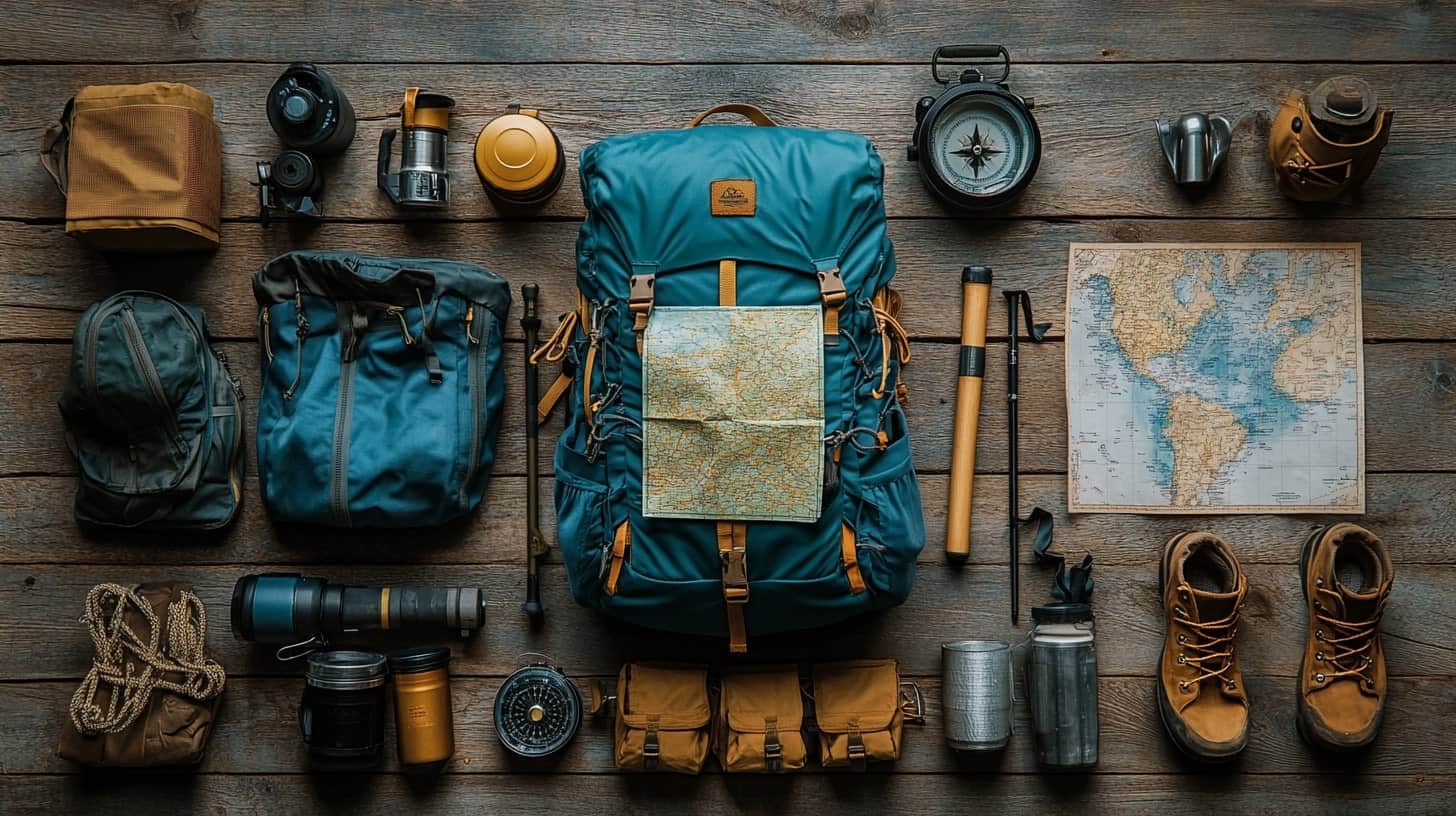Embarking on an outdoor adventure can be one of the most rewarding experiences. Whether you’re hiking in the mountains, camping by a serene lake, or trekking through dense forests, the right gear can make all the difference. Proper preparation not only enhances your enjoyment but also ensures your safety. This article explores the essential gear you need to pack for your next outdoor escapade.
The Foundation: Choosing the Right Backpack
A reliable backpack is the cornerstone of any outdoor adventure. The type of backpack you choose depends on the duration and intensity of your trip. For day hikes, a lightweight pack with a capacity of 20–30 liters is ideal. For multi-day treks, opt for a larger backpack, typically in the 50–70-liter range, to accommodate your gear.
Look for features like adjustable straps, padded hip belts, and compartments for easy organization. A waterproof or water-resistant material is crucial to protect your belongings from unexpected weather changes.
Navigation Tools: Finding Your Way
Even if you’re familiar with the area, carrying navigation tools is non-negotiable. A physical map and compass are reliable companions that don’t rely on batteries or signals. For added convenience, a GPS device or smartphone app like AllTrails can help you stay on track.
Ensure you know how to use these tools before setting out. For longer trips, consider a portable power bank to keep electronic devices charged.
Shelter: Protection from the Elements
If your adventure involves an overnight stay, a quality shelter is essential. Tents, bivy sacks, and hammocks with rainfly options are popular choices. Select a shelter that matches the climate and terrain of your destination.
Look for lightweight and durable materials. Quick setup designs are particularly useful if you’re traveling to areas with unpredictable weather or if you arrive at your campsite late.
Clothing: Dressing for Success
Layering is the golden rule of outdoor clothing. Proper layers help regulate your body temperature and protect you from the elements:
- Base Layer: Moisture-wicking fabrics to keep sweat away from your skin.
- Insulating Layer: Fleece or down jackets to retain warmth.
- Outer Layer: Waterproof and windproof jackets and pants for protection against rain and wind.
Don’t forget to pack extra socks, gloves, and a hat. For footwear, choose sturdy hiking boots with good ankle support and traction.
Hydration and Food: Fuel for the Journey
Staying hydrated is crucial during any outdoor activity. Carry a hydration system like a CamelBak or a durable water bottle. For longer trips, consider a water filtration system or purification tablets to refill safely from natural water sources.
Pack calorie-dense snacks and meals that are easy to prepare. Granola bars, trail mix, freeze-dried meals, and jerky are great options. Don’t forget a lightweight camping stove if your trip requires cooking.
Safety First: First Aid and Emergency Gear
Accidents can happen even on the most well-planned adventures. A well-stocked first aid kit is essential. Include items like bandages, antiseptic wipes, pain relievers, tweezers, and moleskin for blisters.
Other emergency items to consider:
- Multi-tool or knife: Useful for repairs, cooking, and unexpected situations.
- Emergency blanket: Provides warmth in cold conditions.
- Whistle: Helps signal for help in emergencies.
- Headlamp or flashlight: Essential for visibility at night, with extra batteries.
Fire and Cooking Essentials
If your trip involves overnight camping, you’ll need tools to start a fire. Waterproof matches, a lighter, or a fire starter are essential for warmth, cooking, and signaling in emergencies.
For cooking, lightweight and compact stoves like the Jetboil are excellent choices. Don’t forget to pack utensils, a pot or pan, and biodegradable soap for cleaning up.
Extras That Make a Difference
While the basics are critical, a few extras can enhance your adventure:
- Binoculars: Perfect for wildlife watching or scouting terrain.
- Camera: Capture memories of your trip in high resolution.
- Trekking Poles: Help reduce strain on your knees during steep ascents or descents.
- Bug Spray and Sunscreen: Protect your skin from insects and harmful UV rays.
Tips for Packing and Preparation
Packing efficiently can save space and weight:
- Place heavier items at the bottom of your backpack for better weight distribution.
- Use dry bags to keep your gear organized and protected from water.
- Create a checklist before packing to ensure you don’t forget anything important.
Test your gear before your trip. Setting up your tent, trying out your stove, and walking with your loaded backpack can prevent surprises in the wilderness.
Conclusion
Outdoor adventures are a chance to disconnect from the daily grind and reconnect with nature. Packing the right gear ensures a safe, enjoyable, and memorable experience. From sturdy backpacks and navigation tools to emergency kits and proper clothing, every item plays a role in your adventure’s success.
Preparation and knowledge are your greatest allies. Invest in quality gear, learn how to use it, and embrace the journey. Whether you’re hiking through towering mountains or camping by a quiet lake, the right preparation makes all the difference. Happy adventuring!

